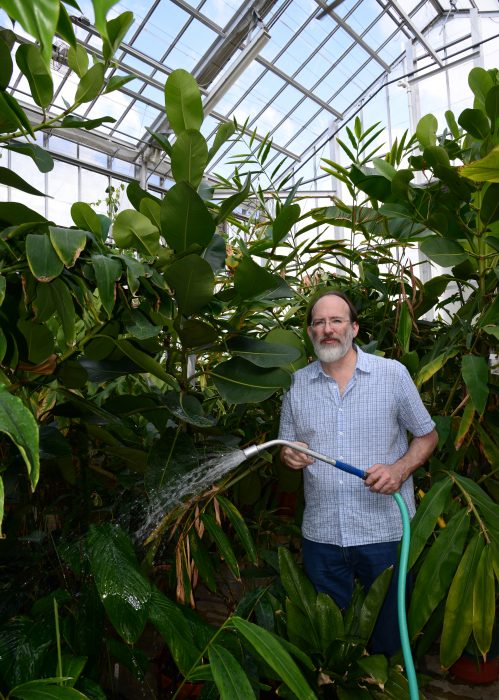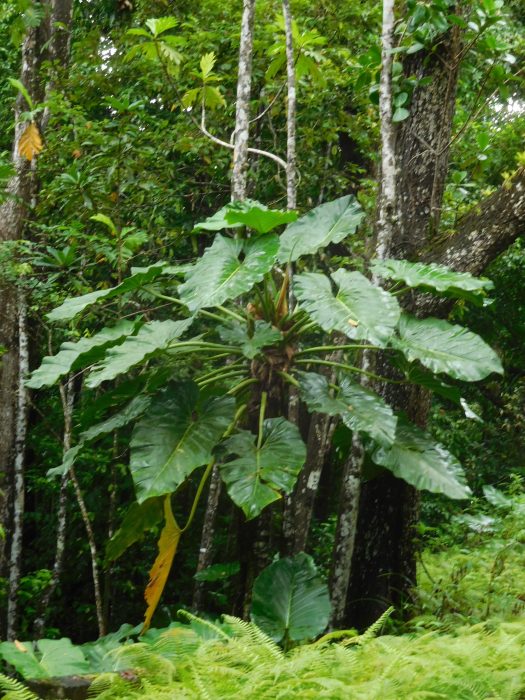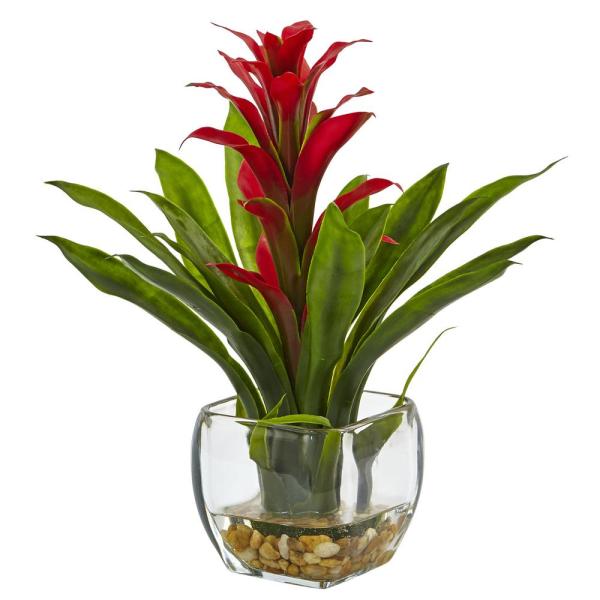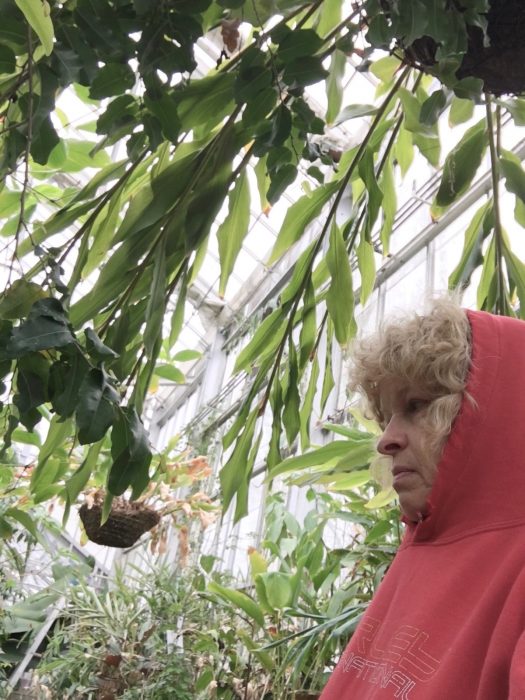Our Smithsonian: Won’t someone think of the philodendrons?
Fortunately, someone has. Botanists are making regular trips to the greenhouses full of specimen plants to make sure that (the lack of) April showers doesn’t result in a dearth of May flowers.
“It is nice to get out of the house,” observes Ken Wurdack, curator in the Natural History Museum’s Department of Botany, who recently has been driving twice a week from his house in Bethesda to the Botany Department Greenhouse at the Museum Support Center in Suitland, Maryland. Unlike typical museum specimens, the Smithsonian’s diverse living collections of plants and animals need daily attention to survive. Despite the region-wide coronavirus shut down, someone still needs to water the plants in the Botany greenhouse every day. When the sun is out the greenhouse can heat up considerably, causing some plants to quickly dry out.
Before the COVID-19 pandemic, a contract employee watered the greenhouse plants on weekdays, but was unable to continue after social isolation was implemented Botany curator Jun Wen, Acting Collections Manager Sue Lutz, and Wurdack stepped up: Lutz and Wurdack presently water the plants two days each week and Wen one. A different contractor waters the greenhouse on weekends.
Although watering is not normally part of his job, it promotes the needs of the Botany Department staff and it keeps the plants happy, Wurdack says. “It’s sort of a win-win thing.”
“It takes an hour-and-a-half to two hours to water the plants in the greenhouse, but for me there’s other stuff to do as well while I am there,” Wurdack adds. “I spend a bit more time because I have research plants of my own in the greenhouse and other staff, including Wen, have research plants there that need special attention.”

Botanist Ken Wurdack turns on the waterworks. (Photo courtesy Ken Wurdack)
Unlike the Smithsonian Gardens greenhouses which are also located on the Museum Support Center grounds, the Botany Department plants are mostly “not of ornamental value, but for research,” Wurdack explains. “Inside are a diversity of plant species collected during research trips to Southeast Asia and other places around the world. At the moment there are a lot of ginger species collected by one of our curators, a lot of grapes and grape relatives [the family Vitaceae] collected by Wen, and I work on rubber and its relatives [the family Euphorbiaceae].”
Today, the living plants in the Botany greenhouse have a lot of research value, Wurdack adds, because of changing research methods (such as genomics) and because it is now harder for researchers to bring plant specimens into the United States. “Our government is worried about things that can hitchhike in on the plants, such as potential diseases and insect pests. So just dealing with the regulatory apparatus of getting something new into the country is hard and getting permission to take something out of other countries is getting harder as well.”
“For many of the plants inside the greenhouse, the germplasm is decades old,” Wurdack says. “Much of it was brought back in the 1980s and 1990s. We’ve had a lot of Southeast Asian collecting, a lot of African collecting, and trips that were made at a time when it was much easier to acquire plant species.”
In addition to specimens being taken from the Botany greenhouse and then dried, pressed and added to the Botany Department’s herbarium as voucher specimens, greenhouse plants are also used to sample the RNA and DNA for genomics studies.
It has been estimated that the Botany greenhouse contains about 1,000 live potted plants, Wurdack says. “I’ve heard the 1,000-pot estimate but I’ve never counted them. It’s a fairly large complex with a lot of stuff inside.”
Watering the plants in the greenhouse is not as simple as turning on a hose and soaking everything down. “The greenhouse is a complex of five smaller houses, and each area contains plants grouped according to their different environmental requirements and slightly different watering regimens,” Wurdack says.
“For example, we have a house with desert plants that don’t get as much water. We have plants from Southeast Asia that are from a monsoon climate. They are coming out of dormancy now after being leafless all winter and we’re gradually increasing their water. Overwatering in winter when plants are dormant can cause rot”. We have tropical plants that need a lot of water and humidity; we have a selection of grapes and grape relatives that are also just coming out of dormancy and starting to leaf out.
“In the central room there are some big plants in relatively small pots that need a lot of water, with smaller plants in pots underneath them. Once you have done the watering a few times you can sort of figure out what needs watering and what doesn’t. It becomes common sense.
“On a cool, cloudy day the plants are not going to dry out as much as on a hot sunny day, but every day something needs to be watered. If you wait more than a day [then] something will probably be unhappy or die.”
One advantage of his regular greenhouse visits, Wurdack adds, is that “I’m able to take a look at my own research specimens, which I don’t see as often as I would like. It’s nice to get to know my plants. I’m a botanist, I like plants, I like to garden. It’s second nature to me.”

This is a giant philodendron (Philodendron giganteum).

This is a bromeliad.
On the days she waters the greenhouse, Botany acting collections manager Sue Lutz leaves her house in Mount Airy, Maryland, about 6:15 a.m., and gets to the greenhouse a little after 7. She likes to get there early to use the office and computer inside the greenhouse. “I do collections office work for a couple of hours and like to wait until it gets a little warmer before I start watering, say around 10 a.m., especially if it is going to be a sunny, hot day.”
In addition to watering she cleans up the dead leaves in the different areas of the greenhouse, sweeps things up and does a little more upkeep. “I’m happy to do it,” she adds.
With the shut-down Lutz took on an additional responsibility/ “Because I have access to get in and out of the Natural History Museum, I made several trips back and forth rescuing people’s office plants,” she explains.
Her rescue mission began when she mentioned to a friend that she would be watering the greenhouse plants and could grab his office plant and take it to Suitland to be cared for during the shutdown. “Word got around and suddenly I had this Excel file of offices in the Botany Department with people’s plants in them to pick up. It took a couple of trips back and forth to get them all.
“The Anthropology Department got wind that I was doing this, and they requested I take three plants: a spider plant that once belonged to curator and archaeologist Betty Meggers, said to date back to 1949, and two bromeliads.
“I said okay and went to get them with this little cart. I found the spider plant and two giant philodendrons (which are definitely not bromeliads.) They were absolutely enormous! I had to somehow fit them all into the back of this SI vehicle, a Ford Escape. It was pretty funny.”
Just recently, nearly a month into the shutdown, Lutz picked up an additional “windowsill” of office plants from Natural History. “The area where the office plants go in the greenhouse has gotten very full,” she says. “After the shutdown, if people don’t remember whose plants are whose when I take them back, I guess they will become mine!”

Botanist Sue Lutz ponders how she is going to return all those office plants once the the COVID-19 shutdown ends. (Photo courtesy Sue Lutz)
Posted: 22 April 2020
-
Categories:
Collaboration , Feature Stories , Natural History Museum , Science and Nature







